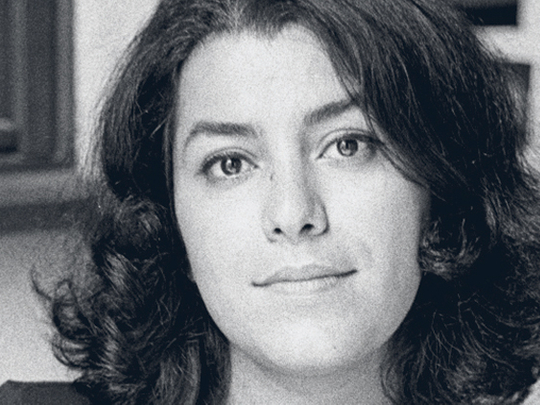
Marjane Satrapi hasn't been back to her native Iran for ten years — ever since she started writing books.
It wouldn't be a good idea for her to return, she told Weekend Review from Paris, as people who have talked about the same things as her are not in the best positions. "They are in jail," she said.
Satrapi, 41, is the author of a number of graphic novels for which she both writes and creates illustrations.
Persepolis received critical acclaim in France and an animated film of the graphic novel was also produced, winning the Audience Choice Award for Fiction at the 2007 Middle East International Film Festival (MEIFF) in Abu Dhabi.
Story of growing up
The novel tells Satrapi's own story of growing up in Iran during the days of the revolution in the late 1970s and 1980s.
In 1979, the Shah was overthrown and Ayatollah Ruhollah Khomeini returned with strict enforcement of an Islamic state.
Persepolis is an ancient city in Iran's Fars province which was declared a World Heritage Site by Unesco in 1979.
The author was born in Rasht in north Iran, grew up in Tehran where she studied at the Lycée Francais, then left for Vienna and later studied Decorative Arts in Strasbourg, France.
Satrapi has also written Embroideries, which introduces the reader to the private sexual lives of Iranian women.
Since 1997, she has been living in Paris, where Persepolis was born. Her graphic novel won several comic book awards: Prix Alph'art Coup de Coeur at Angoulême, Prix du Lion in Belgium, Prix Alph'art du Meilleur Scénario and the Prix France Info. However, Satrapi said, Persepolis is not an autobiographical work.
"You write those if you have a problem with your family and friends and you want to tell them in a way that you don't like them," she said.
Instead, Satrapi continued, it is a story of how an individual's life — the young character Marji's — changed completely from one day to the next. "It's more about an individual smashed by the state [which] pushes her to choose a way of sorting things out between all these events."
Satrapi said she has never pretended Persepolis was a historical, sociological or political document.
Rather "it's my point of view and the way I lived", she said. "It can't be objective as it is your point of view, so it can't be anything but subjective." However, Satrapi isn't bitter against the Iranian regime and she loves her country.
"It's just a question of geography, where you're born," she said, continuing that she lives where and with whom she wants and can live out her passions, "so I don't complain".
Support for human rights
She also speaks highly of Shirin Ebadi, the winner of the Nobel Peace Prize, who recently claimed she had her medal removed by the Iranian authorities — the first instance of such kind, which was denied by the Iranian government citing tax evasion.
"[You can't] not think that what she does is great — if someone thinks that, then she is stupid. There's no way you can say something against this," Satrapi said of the human rights activist.
"Is [human rights] a Western standard? It's not a Western standard. It's a standard for human beings. This has nothing to do with East or West, the standard of life. … Of course I love her," Satrapi said.
For Satrapi, whatever she doesn't tell with the story, she shows with drawings. That way, she doesn't have to choose between drawing and writing.
"I think with images," she said, "and since the genre [graphic novels] exists, I don't see why I have to choose between one or the other."
One big problem with drawing, she feels, is that it is often associated with childhood, which is one of the main problems that cartoonists face.
"We write with images — it's a question of showing," she said.
At present Satrapi is working on a new film project, for which she is working with a cinematographer. Shooting is due to commence in July.








